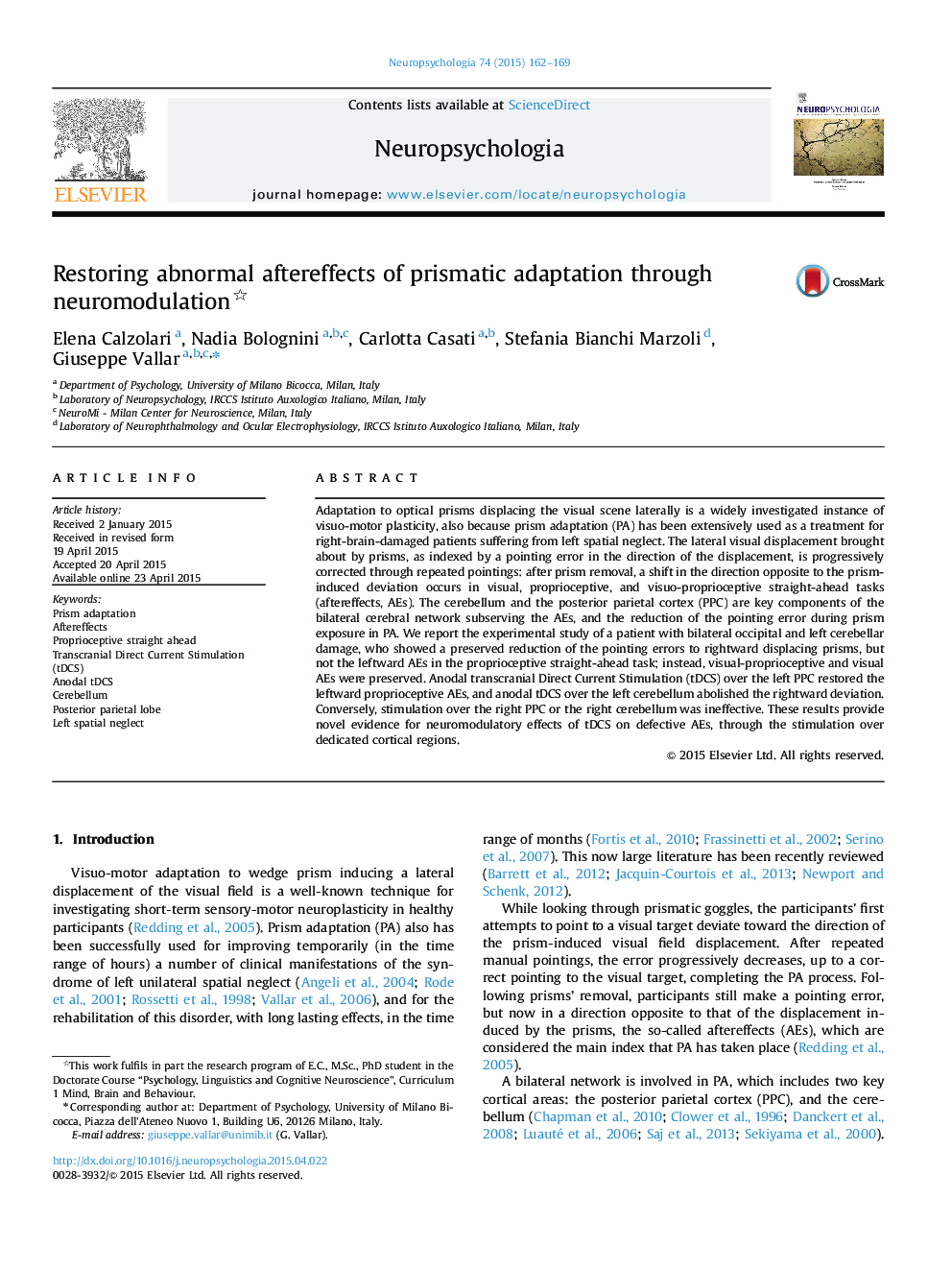| Article ID | Journal | Published Year | Pages | File Type |
|---|---|---|---|---|
| 7320032 | Neuropsychologia | 2015 | 8 Pages |
Abstract
Adaptation to optical prisms displacing the visual scene laterally is a widely investigated instance of visuo-motor plasticity, also because prism adaptation (PA) has been extensively used as a treatment for right-brain-damaged patients suffering from left spatial neglect. The lateral visual displacement brought about by prisms, as indexed by a pointing error in the direction of the displacement, is progressively corrected through repeated pointings: after prism removal, a shift in the direction opposite to the prism-induced deviation occurs in visual, proprioceptive, and visuo-proprioceptive straight-ahead tasks (aftereffects, AEs). The cerebellum and the posterior parietal cortex (PPC) are key components of the bilateral cerebral network subserving the AEs, and the reduction of the pointing error during prism exposure in PA. We report the experimental study of a patient with bilateral occipital and left cerebellar damage, who showed a preserved reduction of the pointing errors to rightward displacing prisms, but not the leftward AEs in the proprioceptive straight-ahead task; instead, visual-proprioceptive and visual AEs were preserved. Anodal transcranial Direct Current Stimulation (tDCS) over the left PPC restored the leftward proprioceptive AEs, and anodal tDCS over the left cerebellum abolished the rightward deviation. Conversely, stimulation over the right PPC or the right cerebellum was ineffective. These results provide novel evidence for neuromodulatory effects of tDCS on defective AEs, through the stimulation over dedicated cortical regions.
Keywords
Related Topics
Life Sciences
Neuroscience
Behavioral Neuroscience
Authors
Elena Calzolari, Nadia Bolognini, Carlotta Casati, Stefania Bianchi Marzoli, Giuseppe Vallar,
